Risk is prevalent throughout our lives – both business and personal, from having your personal credit card numbers stolen, to accidentally letting loose a ransomware attack at work by clicking on a link that appeared to be emailed from a trusted source. Law firms, like any other business, grapple with the ever-present threat of technology-related risks. Every firm has assets, encompassing data, software, systems, and users, and each has unique vulnerabilities. Threats, especially from bad actors, compound the risk.
In 2024, we know that risk mitigation involves modifying risk rather than eliminating it. While risks are unavoidable, their impact can be lessened. Techniques include implementing controls, both technical and operational. Analogous to wearing a seatbelt in a car, risk transfer via cyber insurance, risk avoidance through regulatory compliance, and risk acceptance, as seen in everyday activities, contribute to a holistic risk management strategy.
Asset Inventory
A complete asset inventory is foundational to risk mitigation. Identifying and understanding assets, from workstations to servers and applications, is crucial. Knowing where critical data resides and implementing security controls accordingly ensures comprehensive protection. A lack of asset inventory can lead to a false sense of security and increase vulnerability.
Lifecycle Management
Managing the lifecycle of hardware and software assets, from planning to decommissioning, is imperative. Regular upgrades and adherence to manufacturer guidelines prevent end-of-life vulnerabilities. Lifecycle management minimizes technical debt, ensuring cost-effective and secure operations.
Patch Management and Vulnerability Management
Continuous patch management is essential for closing vulnerabilities within applications and safeguarding systems. Vulnerability management complements patching by identifying missed updates, zero-day vulnerabilities, and ensuring overall network security. The cost of regular patching and vulnerability management is significantly lower than the aftermath of a compromise.
Ransomware and Reputation Management
Ransomware threats have evolved beyond encrypting data. Attackers now target brand and reputation, adding a new dimension to the risks. Strong patching and vulnerability management controls prevent lateral movement by attackers, protecting client data and brand reputation.
Identity and Access Management
User credentials are a common target for attackers. Identity and access management, including strong password policies and multi-factor authentication, are crucial. The principle of least privilege ensures users have access only to necessary resources, and inactive accounts should be regularly reviewed and disabled.
Network Segmentation
Network segmentation, particularly isolating guest networks from internal resources, enhances security. Limiting access between internal resources further mitigates risks. Prohibiting IoT and personal devices on the main network reduces potential vulnerabilities.
Mobile Device Management (MDM) and Conditional Access
MDM and conditional access policies provide additional layers of security. Managing and controlling access based on device compliance enhances overall risk mitigation.
In the complex realm of legal technology, mitigating risks demands a multifaceted strategy. The interconnected nature of risk components necessitates a comprehensive approach to mitigate it. Law firms must stay proactive, incorporating asset management, regular lifecycle updates, robust patching, and vigilant identity and access controls. By adopting these strategies, your firm can navigate the digital landscape with resilience and confidence, safeguarding sensitive information and maintaining the trust of clients and stakeholders.
To learn more about the risk mitigation practices Innovative Computing Systems provides its clients, watch our recent webinar. If you’re ready to engage a managed service provider with a proven record of risk mitigation, contact an Innovative Account Executive today.



